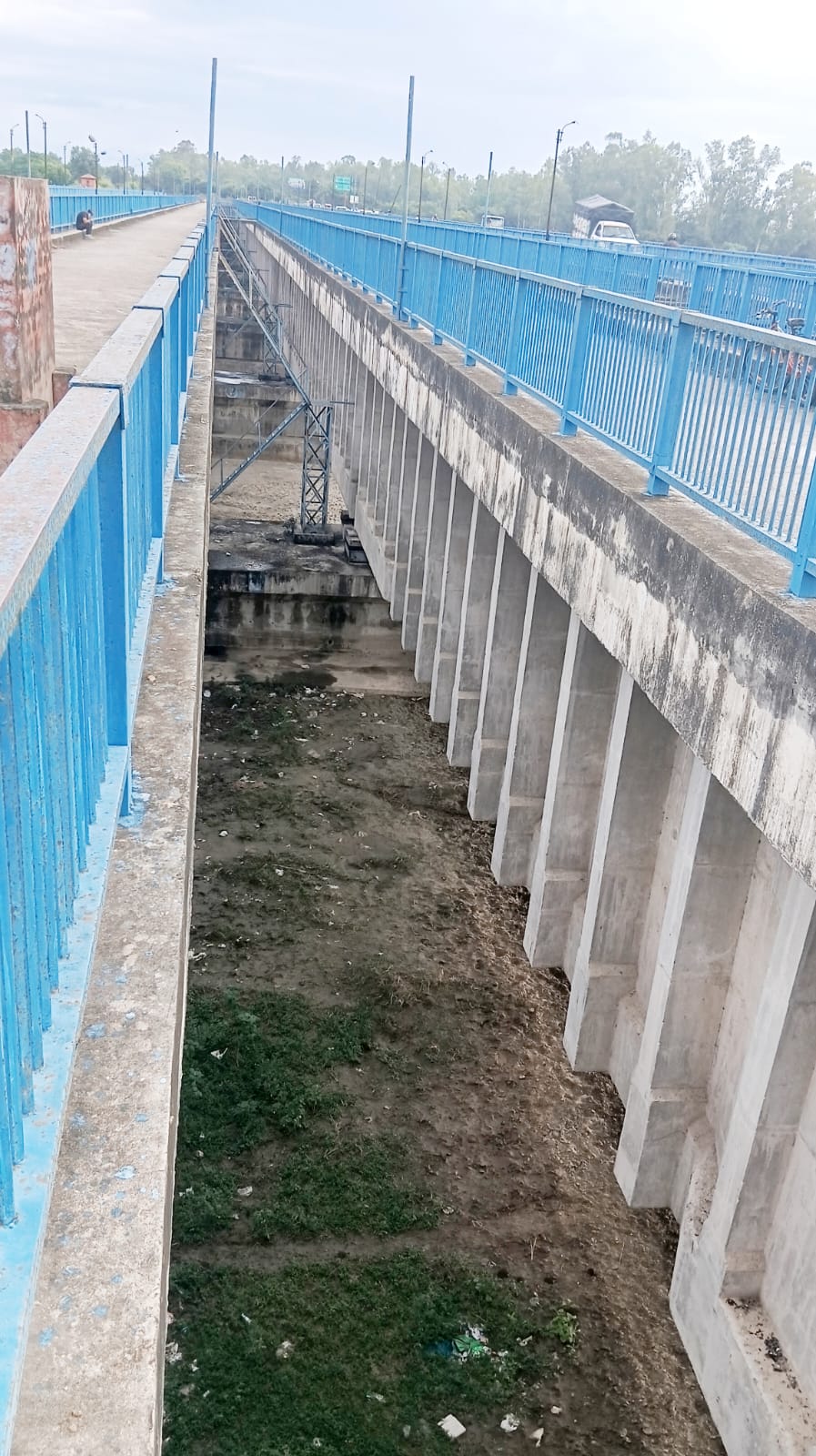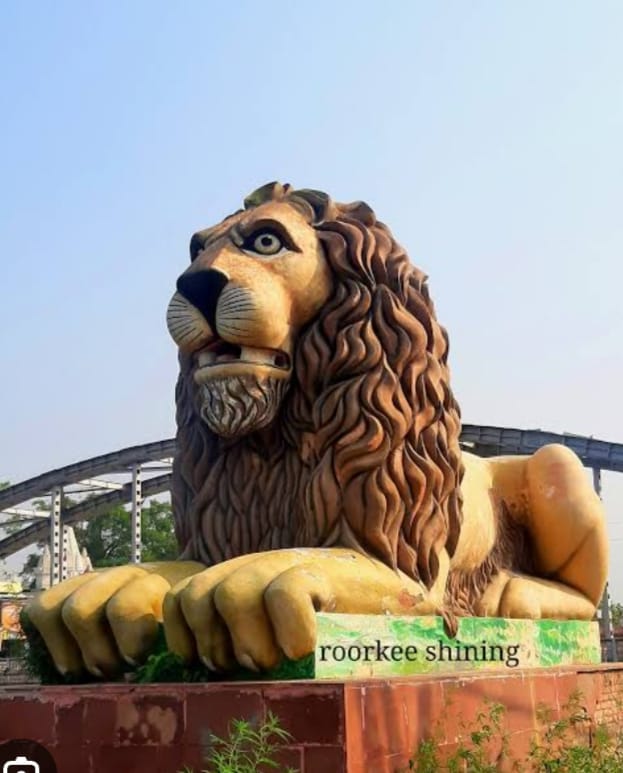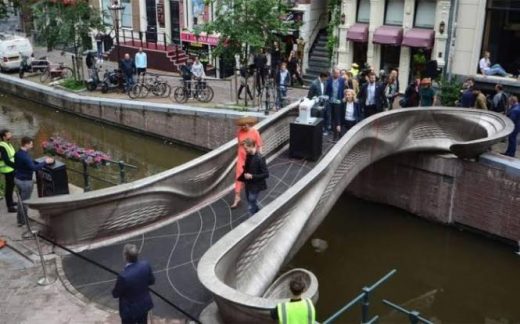By
Kaushal Kishore
Materials Engineer, Roorkee
The new Solani aqueduct on Ganges canal Roorkee was built with prestressed concrete which allows for longer spans and a simple more robust design compared to old bricks, lime- surkhi mortar masonry arches of the old aqueduct, in which 8.5 crores bricks were used, while iron railing used in the sides of two lanes were imported from England. This is interesting to note that materials bringing those days on ship from England to Indian ports take 6-10 weeks via the Suez canal or 3 to 6 months via the longer Cape of Good Hope. Calculate in it also time taken on road from Indian ports to Roorkee.
After retirement from University of now IIT Roorkee I joined M/S Roffe Construction Chemicals Pvt.Ltdd, Mumbai as it’s Chief Concrete Technologists afterwards I became it’s one of the Director.

AQUEDUCT picture taken on 7/10/2025
For the contractor of above aqueduct I designed M-40 grade of concrete with Roffe superpladticizer. Those interested may read my paper by visiting Google site and log in; Civil engineering portal The Ganges canal by Kaushal Kishore.
I had designed numerous concrete mix design almost all cements of India in this I find Utra Tech cement as one of best cement OPC and PPC both With Ultratech cement I had designed numerous concrete mixes from ordinary strength to M-80 grade concrete, self compacting concrete, shot crete concrete, fibre reinforced concrete, fly ash concrete and more There is life after retirement and after retirement I worked for 30 year’s which includes in free time working in home research and testing laboratory and numerous construction sites visits almost all India and outside India. At my age of 92 years I still work for 12 hours daily.
I had never worked for money. In spite of doing so gigantic work what to say about car I even do not have 2 wheeler not any of my house not a single inch of land in this world only pension from IIT Roorkee and few clothes


























I have passed by higher secondary examination securing 91% with commerce background. Is there any possibility of joining such courses with a non science background?
I m a student of 3rd b.tech civil ,i m planning to do my masters in architect or in construction management so plzz suggest me colleges in india…
hi.. I have passed my HSC examination with 85%..now I am aiming to have my B.E. in civil..what is the pre-plan that I need to follow for better results???please suggest…
congrats for good mark, but as u want to become a civil engineer so u have to clear in mind that in civil engineering marks r not so much important but knowledge is 100% needed.
THANK YOU
u r absolutly right …..pahle practical banna hoga
I am studying cvl engg.In mumbai.
Sayali,as you are scholar girl b’coz you got good score in hsc.
Engineering in civil is very easy if your basic math concept is clear.
So,my suggestion is that,clear all concept of INTEGRATION & DIFERENTIATION well.
Best luck for your gud future.
Be perfect in basic maths,integration,differentiation & be confident & think broad
hi.. I am a civil engineer. i would like to say that you should go for B.arch of interior. that will be better option. many girls passing civil engineering doing a job of draftsmen, estimate or some co-ordination work .that is not a correct way of civil engineer. so why to accomodat a seat of civil engineer. one boy can get that seat. girls should do interior etc as girls are best in that fuield
u know that civil engineer is a wide field… girlz can go for designing part or teaching
hi…….i m ravi i m gotta become a new future civil engineer. which subject i wanna concentrate better to become efficient engineer waiting for ur reply
To become friendly with civil eng u have to have strong observation and understand meaning of every structure and design either in ur home or outside . every time eager to ask ur senior that y this or that made ..this will definitely help u to be a great civil engineer
hi dear ,civil is very interesting subject if you are learning civil and you get good result you only think about civil work every were civil work is going on when you live, when you work, when you learn everywhere. One time you close your eye and you sow str. bottom to top with all constriction activity then you never go back. It is my thinking…
sir i wnt to know the compressive strength of concrete at 3,7,28 days respectively
if u r really intrested in civil engineering,its good,really speaking civil is the most broad banch ever in engineering.
thinking from small soil particle,and material propirties preparing most gaint structures thts interesting part.
If u want to learn real civil engineering first of all u hav to prepare fr engineering examination to get a good college bcoz lab facility is must in core branches,fr 12th standard the fluid & material mechanics r some usable topics in civil engineering ,as above said the maths or intigration or diferentiation dosen’t play important role.civil engineering is totally a technical training,that can’t be possible without goog college & lab facility.so first concentrate to get best college as best as possible,after getting that put stress on material propirties,soil mechanics,structure etc,to built more effective concept u can download videos of civil engineering from link http://nptel.iitm.ac.in/courses.php?disciplineId=105
Hello
I am interested to design a Pile foundation , and in given data I have a total dead load of a building and I can use it as a point load, the main thing which I dont know that what other parameters required in the designing of pile foundation and also the steps for the designing of a pile please anybody can reply me its urgent
Regards
Fahad
i like civil engineering. “civil engineers born to create”
hi.. how is civil engg for girls?what is its intensity of scope in future?
asusual u have to go for designing or estimation
sayali future is very very very bright in civil engg. agar site per jana hai to bilkul local style language sikhni padegi
just like in civil engineering works.. the most important structure is mainly the foundation.. so.. have a good foundation in mathematics and train your analitical skills for a faster development of your dream..
CONGRATULATION!!!
i have one doubt w’t is the dry wall
@sayali 🙂 i too am a civil engg student, as sumit intended to say, application of wat u have studied is most important in civil engg! its more a practical oriented subject which involves a lot of field work n lab tests! they are interesting if u have the aptitude! do not jump into conclusions at this critical hour! talk to ppl n know more from them! hope i have been helpful! 🙂
If the engineer died, his work remains forever, as conclusion the engineer never die, cause the engineer is engineer by his work!!!!!!
Hi, sir i am studying civil engineering nd want to ask which field of civil engr is advisable for a lady
Design field specially in bridge , flyover and viaduct.
Hi.. i m acivil Engineer and running my own construction business but i want to get command in structure designing parallel what should i do. please suggest
Hi i’m an a level student studying mathematics,physics& chemistry. Which part of engineering should i take which is best for man
my suggestion is to take any one of these civil, mechanical, or electrical.. with my experience
hi im a future civil engineering,,, what is the best foundation of civil engineering??
hi sir i am doing second year civil engg in chennai college i love surveyingin the land mass my mom told girls are not at all take civil but i like constructing of bulidings so whatever coming to ur mind u do that correctly kk
sir, i m a student of civil engineering.. i jst want 2 ask if i go for mtech, then it would better or if i do jst btech nd join d company nd gain xperience fr d two yrs..dat would b better???
hi i am Arun george final year student of B.E civil…i would like to know more details of “bering strait bridge”…from where could i collect more information about the project….after the complition of BE i would lik to do my ME in bridge engineering…i would like to know more about the course and the prepration needed……
sir i am a final year student of civil engineering and wanted 2 knw which way is better -m.tech or to do a job
it would be better if you do a job along with your master degree ( part time ), thereby you will get an increment in your salary.